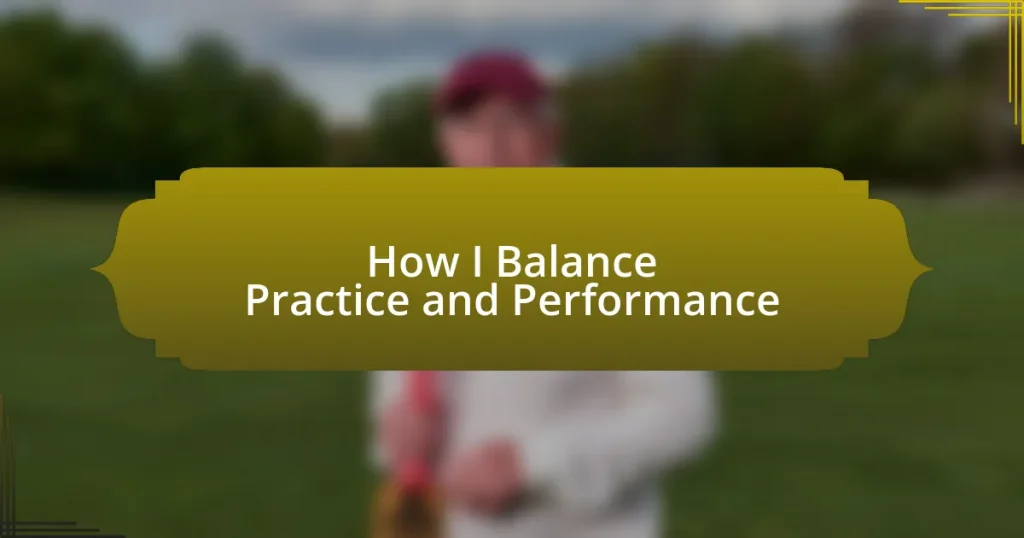Key takeaways:
- Balancing practice and performance enhances both technical skills and emotional expression, leading to a more fulfilling experience.
- Consistent practice builds foundational skills, confidence, and a deeper understanding, essential for effective performances.
- Creating a structured practice schedule with clear goals and variety keeps sessions productive and engaging.
- Regularly evaluating progress and being open to feedback fosters growth and helps overcome plateaus in skill development.
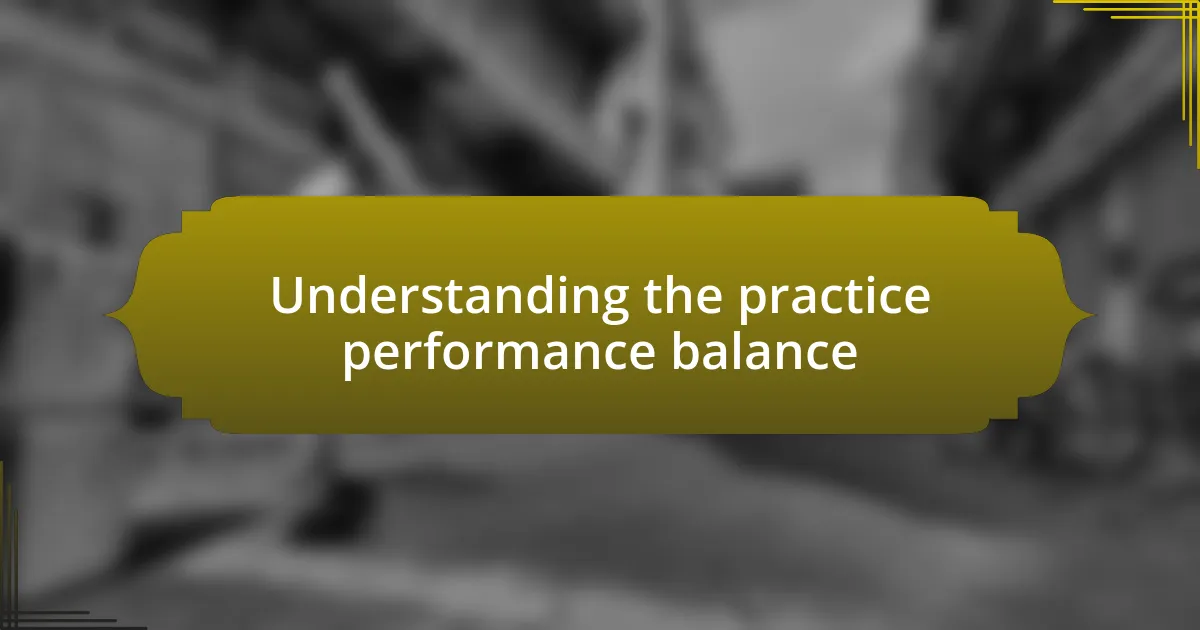
Understanding the practice performance balance
Finding the right balance between practice and performance is crucial for any musician, athlete, or performer. I’ve often found myself caught in that whirlwind of relentless practice, thinking I could play my piece perfectly if I just put in a few more hours. But have you ever considered when enough truly is enough?
I remember a time when I prepared for a big performance but ended up feeling exhausted from over-rehearsing. I learned that pushing past your limits can lead to diminishing returns. It taught me that while practice builds skill, performance sharpens focus. To truly thrive, I had to embrace both elements, allowing each to complement the other.
It’s fascinating how practice lays the groundwork, but performance brings everything to life. Consider this: when you practice, you develop muscle memory, but how often do we rehearse the emotions tied to that performance? Balancing these two aspects means not only honing technical ability but also nurturing the expressive side. How do you find that sweet spot where preparation meets passion?
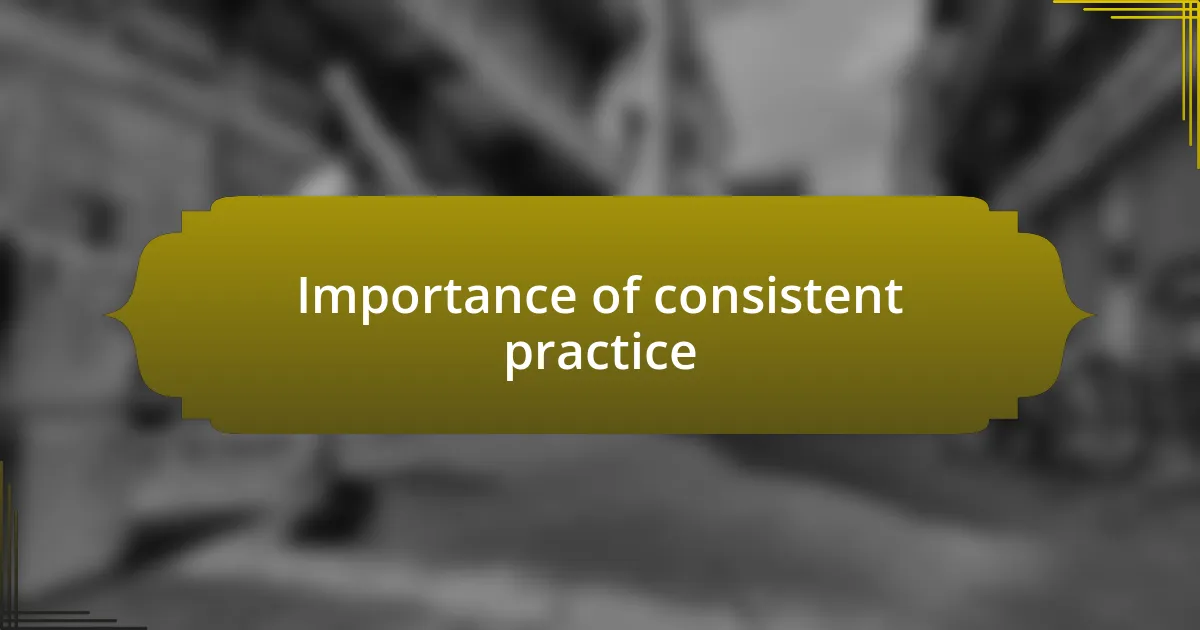
Importance of consistent practice
Consistent practice is essential as it builds a strong foundation for performance. I recall during my early days as a musician, I would practice daily, and the progression was evident. Each session made me more familiar with my instrument, allowing me to play with confidence. This familiarity translates into poise on stage, which is invaluable during a performance.
As I continued to dedicate time to practice, I noticed that key elements, like timing and nuance, became second nature. This isn’t just about rote repetition; it’s about cultivating a deeper understanding. By immersing myself in consistent practice, I’ve been able to convey emotions authentically when performing, a skill that truly enhances my connection with the audience.
When I reflect on my journey, I often think about the balance between technical proficiency and artistic expression. Without regular practice, I struggle to express myself fully during performances. I’ve learned that practicing consistently not only refines my skills but also elevates the entire experience, connecting me with both my craft and the audience.
| Consistent Practice | Performance |
|---|---|
| Builds foundational skills | Allows expression of those skills |
| Enhances muscle memory | Focuses emotional connection |
| Promotes confidence | Demands presence on stage |
| Refines technique | Shapes artistic interpretation |
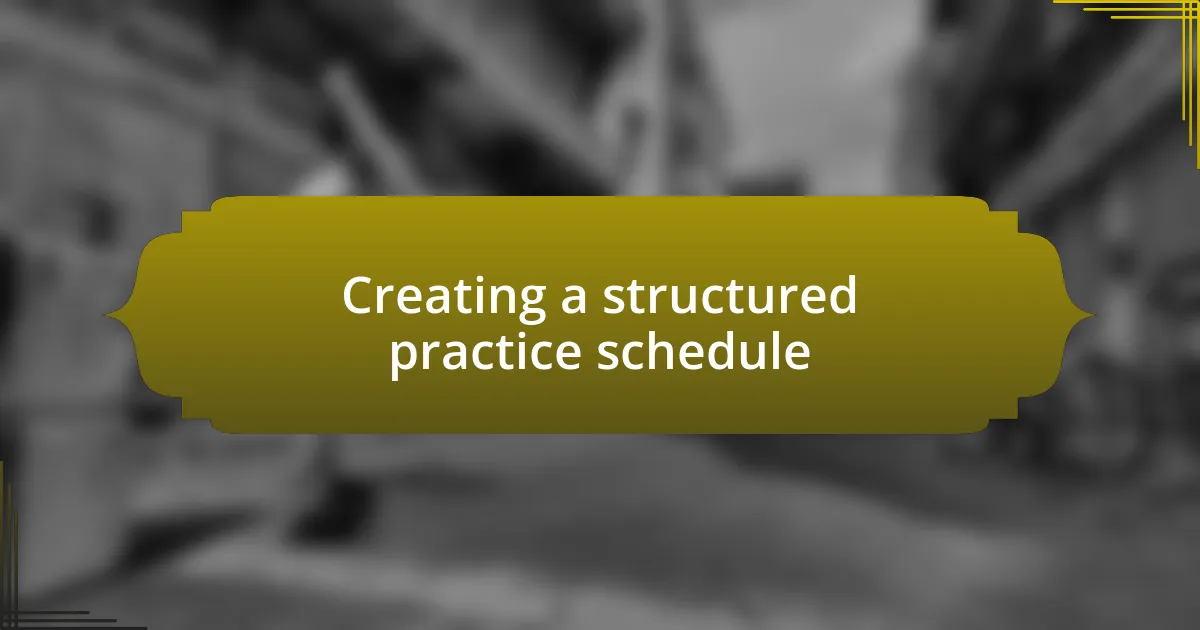
Creating a structured practice schedule
Creating a structured practice schedule is crucial for maximizing the effectiveness of each session. I’ve found that time management can be the difference between productive practice and mere busywork. When I finally took the time to organize my practice, I could feel the shift in my progress. I dedicated specific time blocks for technical exercises, repertoire, and improvisation. It created a routine that I could depend on, making each session purposeful.
To build an effective schedule, consider these key elements:
- Set clear goals: Define what you want toachieve in each practice session, whether it’s mastering a specific piece or improving a technique.
- Prioritize tasks: Focus on the most challenging areas first when your energy is high.
- Be consistent: Choose specific days and times for practice to create a habit.
- Incorporate variety: Mix up different styles or techniques to keep practice engaging and enjoyable.
- Reflect and adjust: At the end of each week, evaluate your progress and tweak your schedule to target any areas that need more attention.
Having a plan keeps me accountable, and I’ve learned to relish the anticipation of each session. It’s not just about putting in hours; it’s about having a clear path to follow, ensuring I’m constantly evolving both in practice and performance.
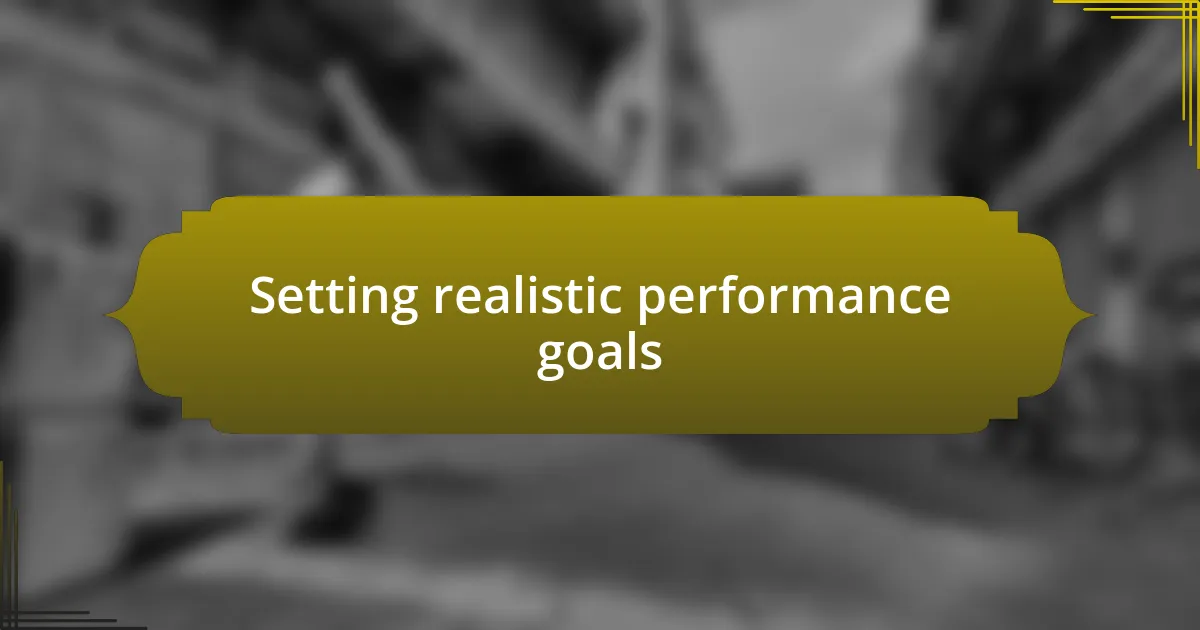
Setting realistic performance goals
Setting realistic performance goals is vital in ensuring steady progress. I’ve often found myself aiming too high, which led to frustration instead of fulfillment. For example, I once set a goal to perform a complex piece without considering my current skill level. It taught me that breaking down larger ambitions into smaller, achievable milestones not only boosts confidence but also provides a clearer pathway to success.
When determining your goals, it helps to align them with your current abilities. Consider the time you have available for practice and the specific skills you want to strengthen. I remember when I committed to refining my scale work over a month; it was both manageable and rewarding. That clarity made my practice sessions feel less daunting and much more constructive.
It’s also important to celebrate small victories. Each time I hit a target, no matter how minor, it reignited my motivation. Reflecting on these milestones reminds me that growth is a journey and not a race. Are you setting yourself up for success by acknowledging your progress along the way? These moments of recognition can drastically change your outlook on practice, making it a more enjoyable experience.
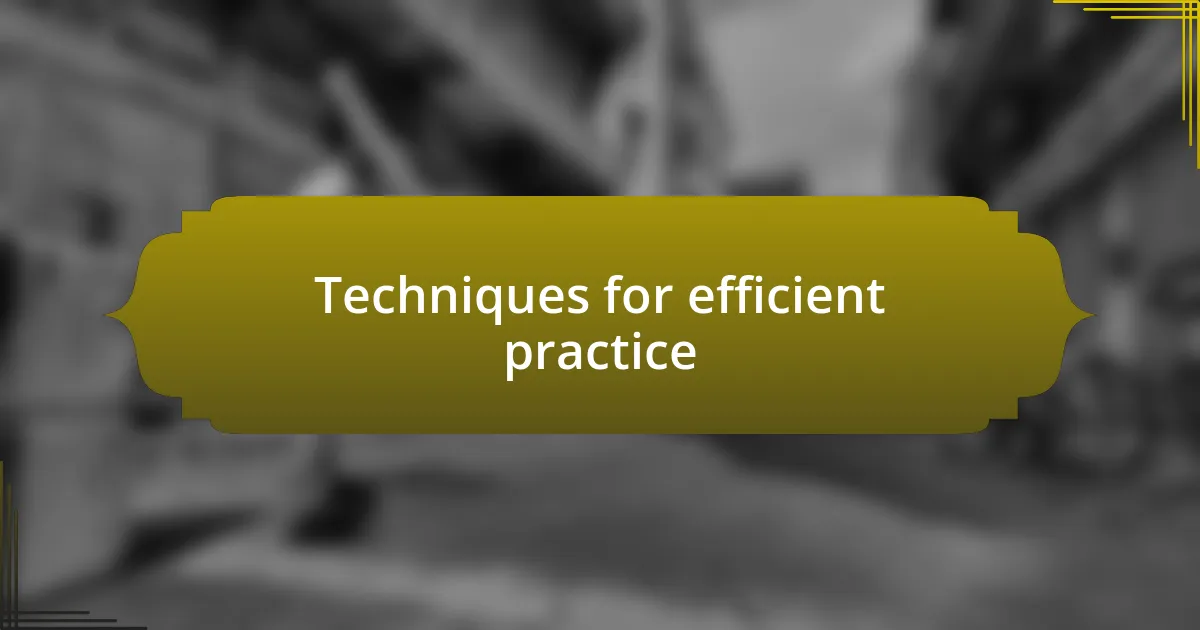
Techniques for efficient practice
To practice efficiently, I focus on using the Pomodoro Technique, which breaks my practice time into manageable chunks. I’ve found that setting a timer for 25 minutes followed by a 5-minute break keeps my mind fresh and engaged. This method not only increases my productivity but also makes lengthy sessions feel less overwhelming. Have you ever noticed how, after a short break, you return to your task with renewed energy?
In addition to timed practice, I like to incorporate varied exercises within my sessions. For instance, I alternate between technical drills and creative exploration. This keeps the experience dynamic and helps strengthen different aspects of my skill set. I remember a week when I mixed scales, improvisation, and sight-reading; it felt like a game rather than a chore. How do you keep your practice lively?
Another effective technique I use is focused repetition. I dedicate a section of my practice solely to challenging pieces, playing those difficult passages repeatedly until they feel natural. There’s something immensely gratifying about mastering a tricky section after persistent effort; it’s like cracking a code. Have you experienced that rush of accomplishment when a once-frustrating piece finally comes together? Those moments remind me that persistence truly pays off in practice.
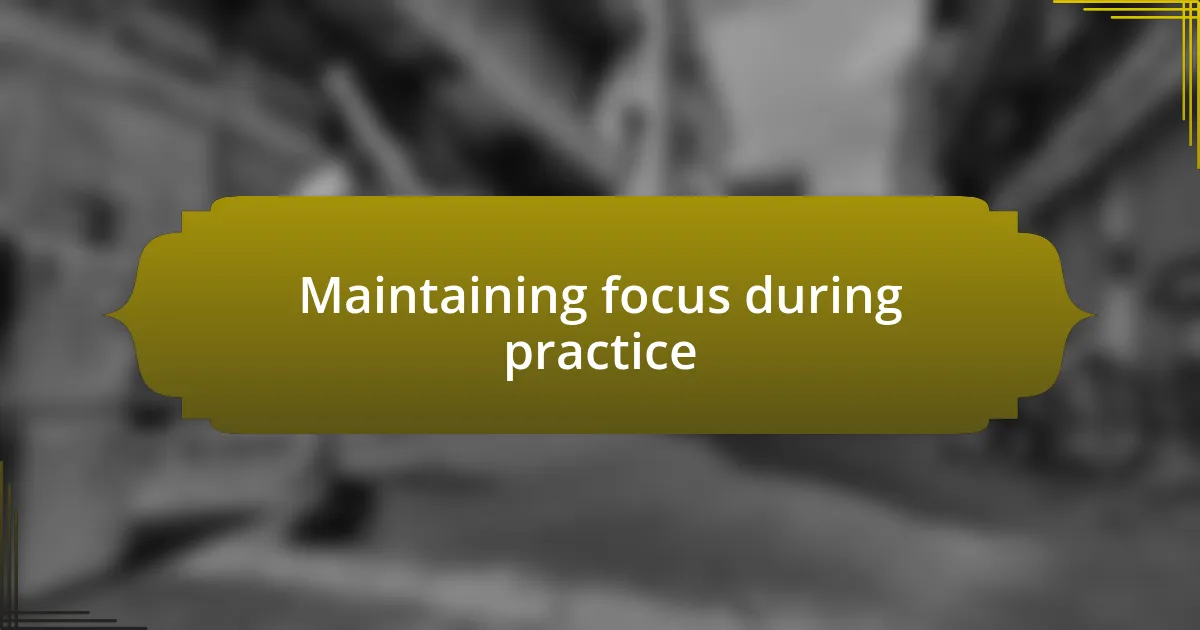
Maintaining focus during practice
One of my key strategies for maintaining focus during practice is to create a distraction-free environment. I make it a point to turn off notifications on my phone and find a quiet space where I can fully immerse myself in the music. I can’t tell you how much of a game changer this has been; when I’m free from distractions, I can dive deeper into what I’m working on. Have you ever tried it? The difference in concentration is often astonishing.
Another aspect I prioritize is setting specific goals for each practice session. Instead of going in with a vague idea of what I want to accomplish, I outline exactly what I intend to achieve. For example, if I’m working on a complex piece, I’ll set a goal to master just the first page or work on my timing for a specific section. It’s fascinating how goal-setting transforms my focus; it gives every practice session a clear purpose. I still recall the time I broke a piece down into manageable segments, and it felt like unlocking a series of mini-victories along the way.
Finally, I emphasize the importance of mindfulness during practice. I’ve found that taking a few deep breaths before I start can drastically improve my concentration. By tuning in to my body and thoughts, I can clear my mind and really engage with the music. Have you ever noticed how a moment of mindfulness can elevate your experience? It often allows me to connect emotionally with the music, resulting in a more profound and fulfilling practice session.
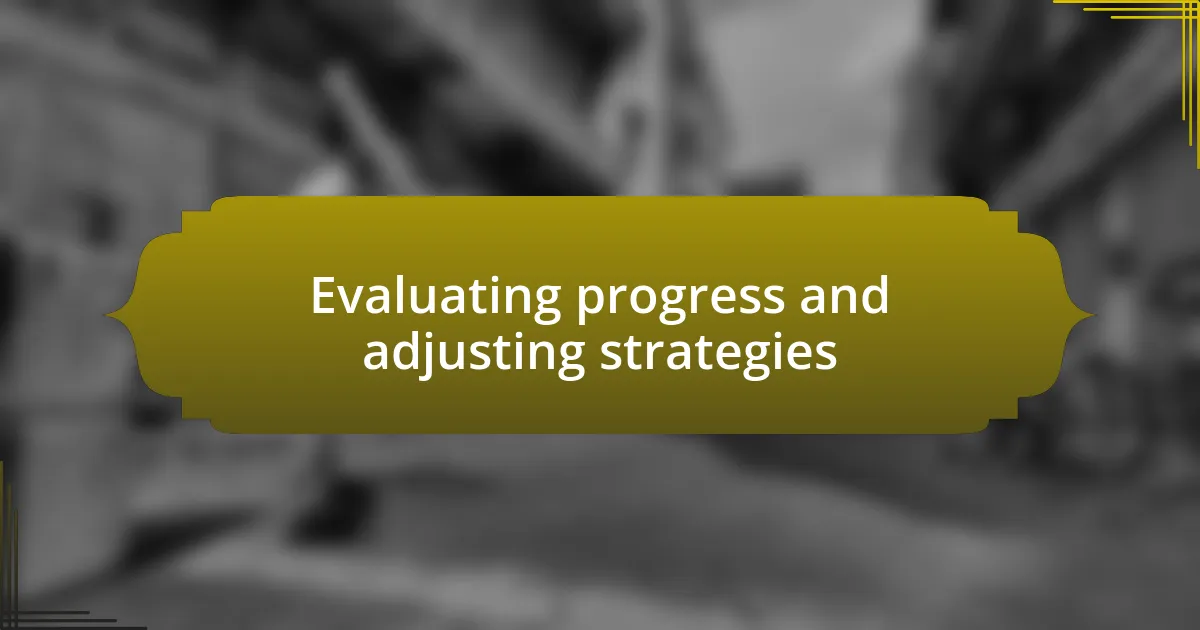
Evaluating progress and adjusting strategies
Evaluating progress is crucial for anyone committed to improvement. I often take time after practice to reflect on what I’ve achieved. Recently, I started keeping a practice journal where I jot down my thoughts about each session, noting what went well and where I struggled. Have you ever considered doing something similar? It’s enlightening to see your growth over time, and it helps identify patterns that might otherwise go unnoticed.
Another aspect I focus on is being flexible with my strategies. Sometimes, despite my best efforts, I hit a plateau. During one period of stagnation, I decided to change my practice routine entirely, swapping out familiar exercises for new ones. It was surprising how a fresh approach rekindled my motivation and led to significant breakthroughs. Adjusting my methods not only reenergized me but also reminded me that progress is often about embracing change.
I also take advantage of feedback from others, as it can offer valuable insights I might miss. A few months ago, I asked a fellow musician to sit in on one of my practice sessions. Hearing their perspective on my technique was eye-opening. It pushed me to rethink my approach in certain areas, proving that collaboration can play a pivotal role in our development. How do you incorporate external feedback into your journey? It can truly be a game changer in evaluating and refining your goals.










